Key takeaways:
- Culinary migration stories connect personal and cultural experiences, enriching our understanding of diverse cuisines.
- Culinary education facilitates the sharing of these stories, enhancing empathy and respect for different cultures through food.
- Food serves as a medium for cultural exchange, preserving traditions while embodying adaptation and resilience.
- Immersive experiences, like field trips and cooking together, create meaningful connections to global culinary histories and the narratives behind them.
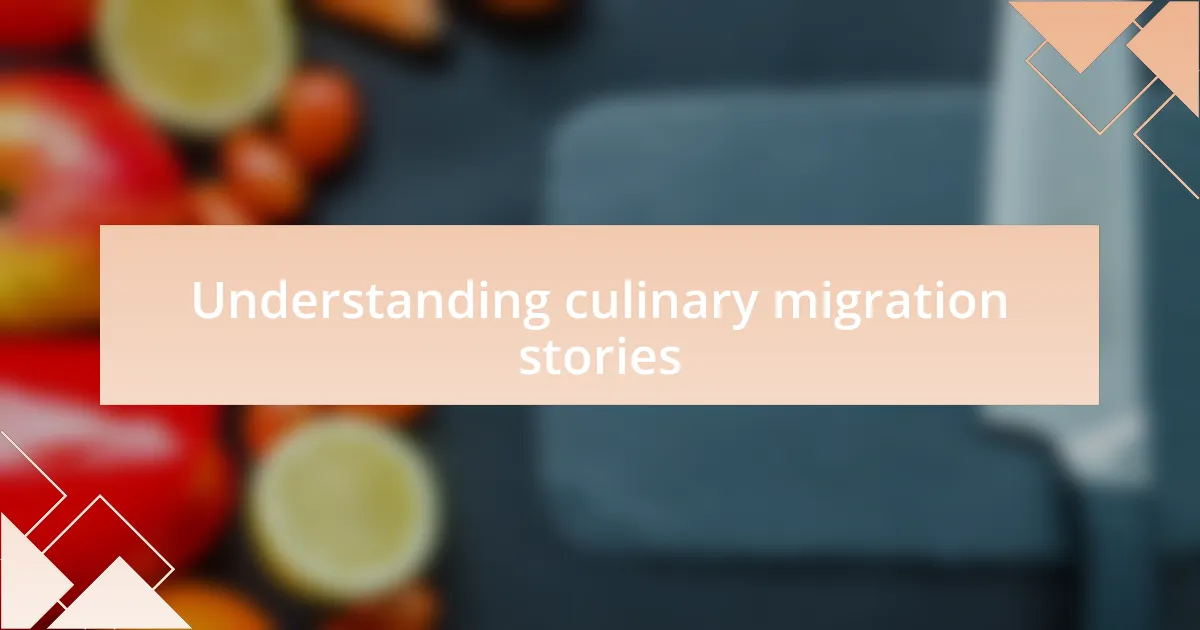
Understanding culinary migration stories
Culinary migration stories reflect the rich tapestry of human experience, as food serves as both a personal and cultural connector. I remember a conversation I had with a friend from Syria, who shared how his grandmother’s recipes traveled with her, a tangible link to her homeland that she passed down through generations. It made me wonder, how many family traditions are encapsulated within the simplest of meals?
Food is more than sustenance; it carries memories, emotions, and dreams. I think about how a single dish can evoke feelings of nostalgia, such as the time I tried my neighbor’s tamales, which transported me to her vibrant memories of family gatherings in Mexico. It begs the question: what stories lie behind the meals we love, waiting to enrich our understanding of different cultures?
Moreover, the act of sharing recipes itself can be a form of storytelling. In my experience, cooking alongside someone from a different background allows you to step into their world, exploring the flavors and techniques that shape their culinary identity. Have you ever felt that sense of connection while preparing a dish with a friend from another culture? It’s these shared experiences that not only educate us but also deepen our appreciation for the diverse culinary landscape that migration creates.
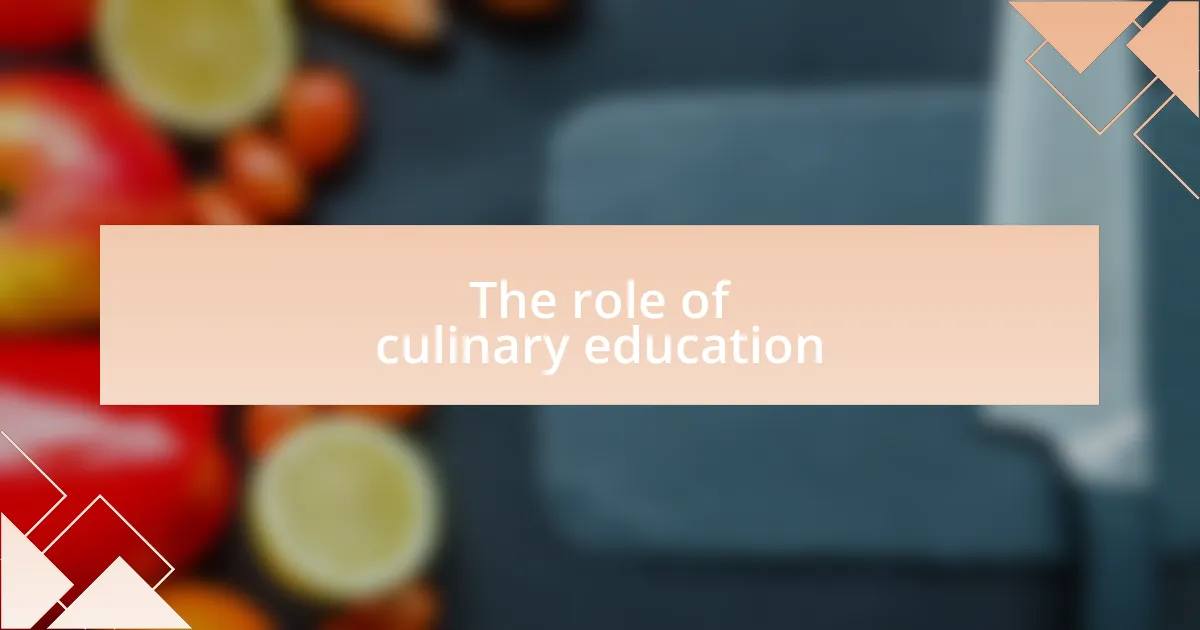
The role of culinary education
Culinary education plays a pivotal role in preserving and sharing these migration stories. When I took a culinary course focused on international cuisines, I was struck by how chefs impart not just techniques, but also the histories behind their recipes. It made me appreciate the nuances of each dish even more. Why is it important to know where a recipe originates? Understanding the context adds depth to our cooking experience.
Moreover, culinary institutions serve as platforms for cultural exchange, fostering a community where diverse culinary traditions can coexist. I vividly recall a cooking demonstration where a chef from Vietnam introduced us to the delicate art of making spring rolls. The joy on his face as he shared his family’s history with the dish reminded me that each culinary lesson is a thread in a larger narrative tapestry. Don’t you think that learning about food can help bridge cultural divides?
The essence of culinary education lies in its ability to evolve with the stories of its students. Each class is a gathering of unique backgrounds, letting us explore myriad flavors and perspectives. I often reflect on how this education equips us with not just skills but also empathy and respect for different cultures. Isn’t it fascinating how food can be an entry point into understanding and valuing diversity?
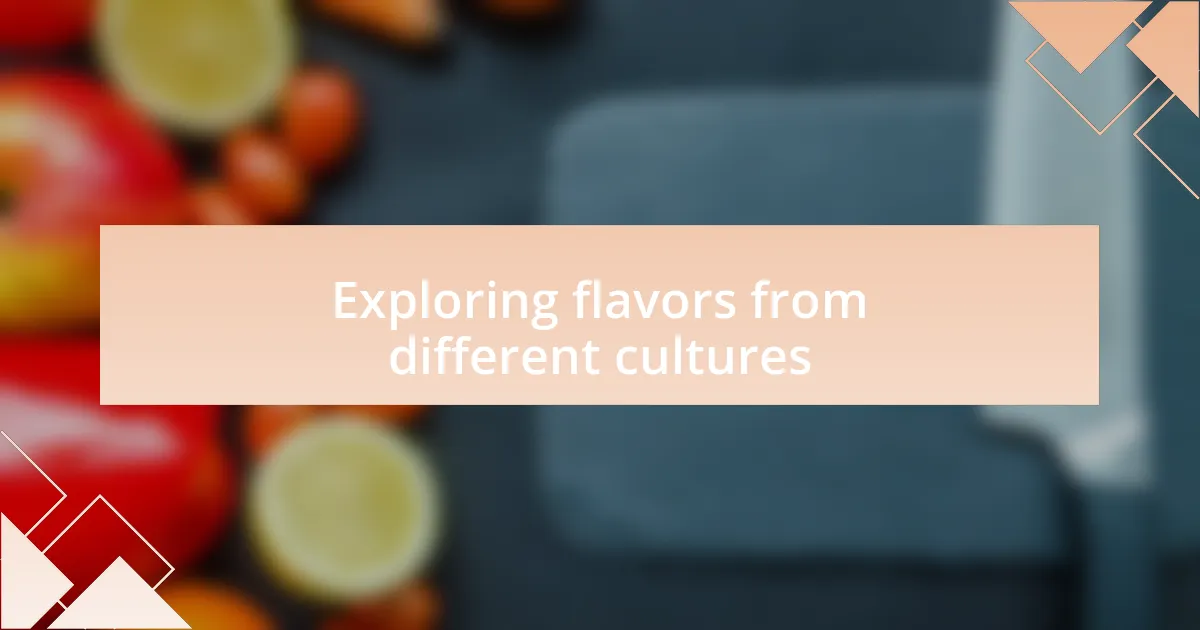
Exploring flavors from different cultures
Exploring flavors from different cultures can be a transformative experience. During a culinary workshop I attended, I had the chance to create a Moroccan tagine. As I ground spices like cumin and coriander, I felt a connection to the vibrant markets of Marrakech, bringing alive stories of traders and families who have passed down these recipes through generations. Isn’t it incredible how a single dish can transport you across continents and time?
I remember tasting my first bowl of pho in a bustling Vietnamese restaurant, where the aroma of star anise and fresh herbs enveloped me. Each sip felt like a hug, rich with stories of resilience and community. It made me question: how often do we overlook the deeper narratives behind our beloved dishes? Exploring these flavors allows us not only to savor food but also to appreciate the lives that have shaped it.
There’s something special about cooking with ingredients that have traveled far and wide. I once prepared a dish from the Caribbean using plantains and coconut, ingredients I had never worked with before. In those moments, I realized that each flavor combination is a testament to cultural exchange and adaptation. Doesn’t that make every bite more meaningful, knowing the history and places behind them?
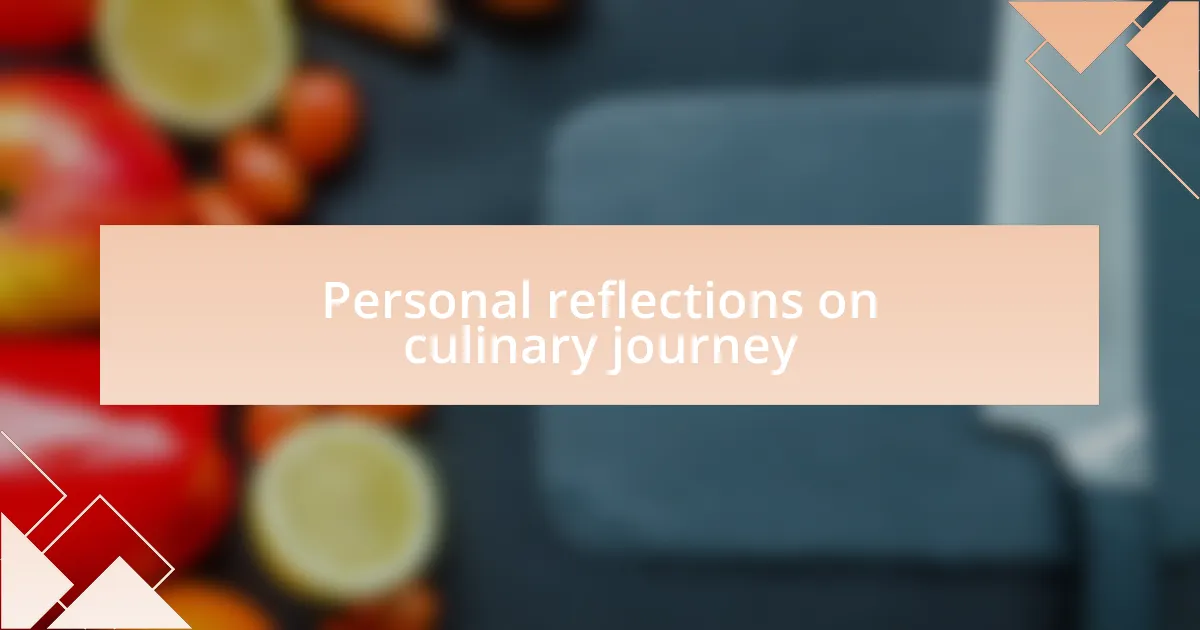
Personal reflections on culinary journey
Reflecting on my culinary journey, I often think back to my first attempt at making homemade pasta. The process felt intimate, almost like each knead and roll was a conversation with my heritage. As I shaped the dough, I found myself contemplating the generations of cooks who came before me, their stories woven into each strand of fettuccine. How remarkable it is that something so simple can connect us to our roots!
There was a moment during a cooking class focused on Indian cuisine when I discovered the magic of spices. As I ground fresh turmeric and ginger, the vibrant colors and fragrances enveloped me. I was struck by the thought that this vibrant blend was not just about flavor; it held the essence of countless family gatherings and celebrations. Can a deeper form of connection exist, where each dish speaks louder than words?
One of my favorite culinary experiences happened when I volunteered at a communal kitchen. I remember working alongside individuals from various backgrounds, each bringing their recipes and stories to the table. It was inspiring to see how food became a bridge, fostering friendships and understanding. Isn’t it incredible how sharing a meal can break down barriers and create a sense of unity among us?
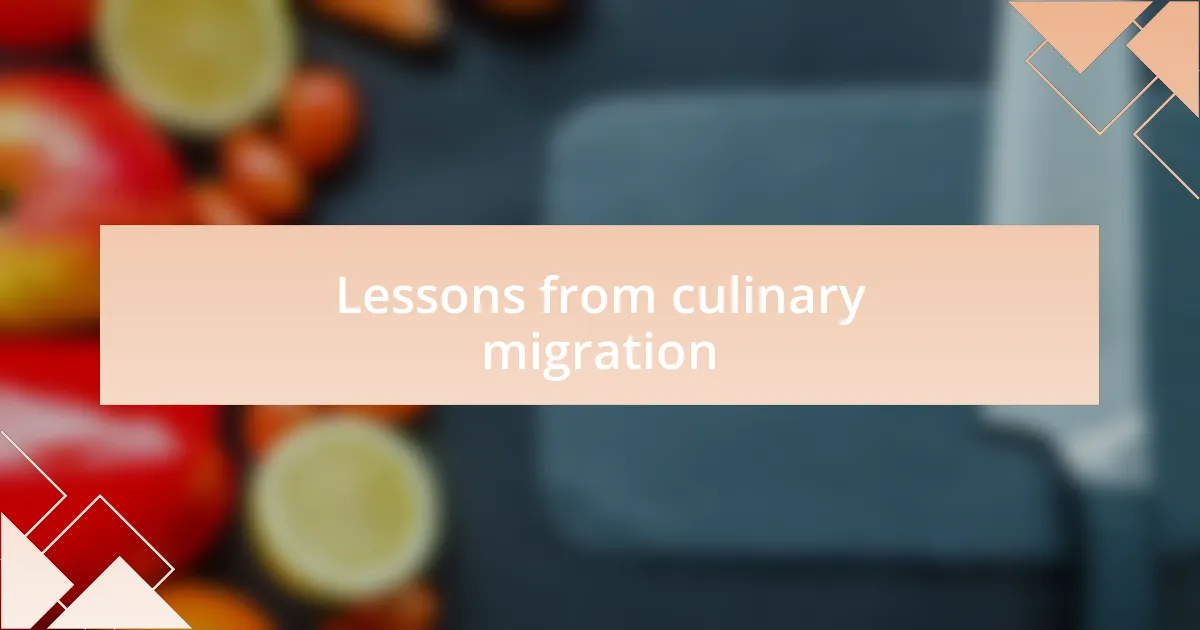
Lessons from culinary migration
Exploring culinary migration reveals profound lessons about adaptation and resilience. One afternoon, during a workshop on Middle Eastern cuisines, I met a chef who had emigrated from Lebanon. As he shared the stories behind his family recipes, I realized that every dish had been transformed over time, reflecting both his cultural heritage and the new influences he embraced. It’s fascinating how cuisine evolves, isn’t it? Each change represents not just a recipe but a journey of survival and identity.
Another powerful insight I gained revolves around the concept of memory and tradition. I remember attending a potluck where different families contributed their ancestral dishes. Among them was a tantalizing biryani and a hearty paella. It struck me how, despite the diversity, each dish told a story of home and migration. Isn’t it amazing how food can encapsulate our memories and act as a vessel for our past, keeping traditions alive even in foreign lands?
Ultimately, culinary migration teaches us about the beauty of innovation. While working on a fusion project, I experimented by combining Italian pizza with Japanese toppings. Surprisingly, the blend of flavors was extraordinary, showcasing the creativity born from cultural exchange. Such experiences prompt me to wonder: how many more exciting culinary innovations await us as we continue to blend traditions and flavors?

Recommendations for culinary educators
Encouraging culinary educators to embrace the narratives behind dishes can deepen students’ understanding of cuisine. During a lesson on French cooking, I invited students to share their personal connections to specific dishes. One student recounted a recipe from her grandmother that sparked her interest in culinary arts. Hearing these stories not only brought the class alive but also helped students appreciate the cultural significance of food.
I recommend integrating local culinary migration stories into the curriculum. I once hosted a guest speaker, a chef from Mexico, who shared his experiences of bringing traditional recipes to a new environment. His journey illustrated not only the richness of his culture but also the struggles of adapting to a different culinary landscape. Such interactions foster a sense of empathy and curiosity, inspiring students to explore culinary history in greater depth.
Finally, I believe that field trips to local ethnic markets or community events can be invaluable. Visiting these spaces allows students to connect with diverse food cultures directly. I recall taking a group to a vibrant Asian night market where they could taste and learn about dishes firsthand. It’s one thing to read about a cuisine and entirely another to experience it. Wouldn’t you agree that immersive experiences are often the best teachers?